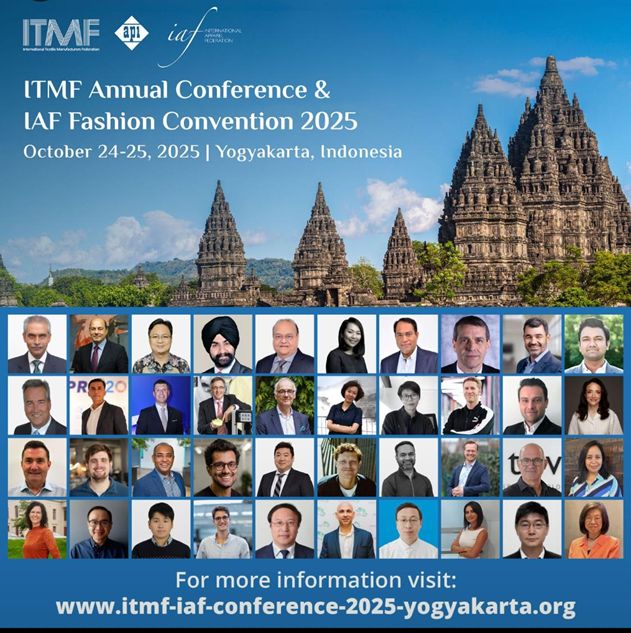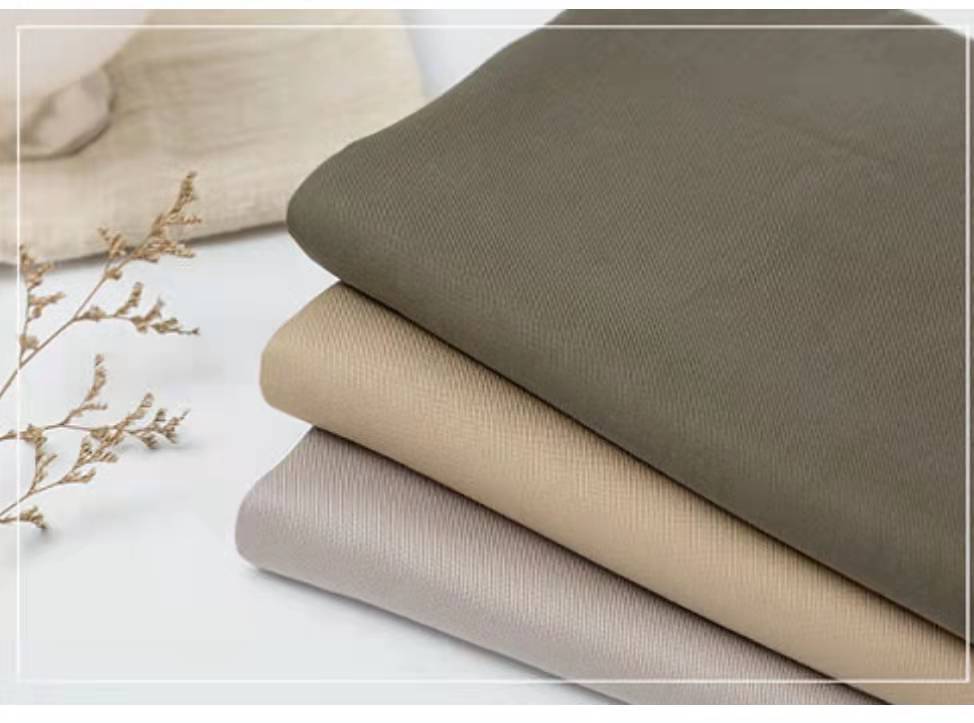FW
"The proliferation of major regional trade agreements, including the recently agreed Trans-Pacific Partnership (TPP) and the Transatlantic Trade and Investment Partnership (TTIP) being negotiated by the US and the European Union, has undeniably played a critical role in expanding global trade and the exports of member countries."

According to the supporters of WTO, everyone is making trade deals these days, but in the long term such arrangements could weaken the world trading system. The proliferation of major regional trade agreements, including the recently agreed Trans-Pacific Partnership (TPP) and the Transatlantic Trade and Investment Partnership (TTIP) being negotiated by the US and the European Union, has undeniably played a critical role in expanding global trade and the exports of member countries.
Critics say such regional agreements pose a threat to multilateral trading system by discriminating against non-member countries, many of which are smaller and poorer. At the same time, they sap the energy of the multilateral negotiations carried out under the World Trade Organization (WTO), which in recent years has progressed slowly in delivering substantial results.

As per the figures from the Geneva-based organisation 265 regional trade agreements (RTAs) are in force. More than one third of these pacts involve the Asia-Pacific region. All of WTO's current 162 members are involved in at least one such agreement.
Said Karl Brauner, the WTO's deputy director-general, so far there are a lot more activities on the bilateral level than multilateral. WTO is in situation where the members have focused their activities on bilateral or regional agreements. He is confident that regional trade deals can help strengthen the multilateral system in the long term. But he expressed optimism that regional agreements can help the global trading system in the long run.
However, Xavier Carim, the South African ambassador to the WTO, has concerns about the growing number of regional agreements.
Achievements
WTO executives say the organisation has achieved some big breakthroughs in the past few years, despite well-publicised differences among developed and developing country members. Most noticeable was the agreement in Nairobi last December to abolish agricultural export subsidies.
As of January 2016, export subsidies in developed countries are prohibited for all forms of agricultural products. Developing country members are to eliminate export subsidy entitlements by the end of 2018, though they have until 2030 for specific types of products.
Replacing the General Agreement on Tariffs and Trade (GATT), the WTO officially came into being in January 1995 to regulate trade among participating countries by providing a framework for negotiating trade agreements and a dispute resolution process.
Another recent signature achievement by the WTO has been the Information Technology Agreement. It will eliminate tariffs on 201 new-generation IT products involving trade worth around US$1.3 trillion, a value bigger than the global automotive sector.
Two and a half years ago in Bali, the WTO also completed a trade facilitation agreement which independent economists believe will contribute more than $1 trillion to the global economy with the majority of the benefits going to developing economies, he added.
By streamlining, simplifying and standardising customs procedures, the trade facilitation agreement can help cut the time and cost of moving goods across borders.
Supporters of the WTO also believe it deserves more credit for its dispute settlement mechanism. Before the organisation's inception, there was no international dispute settlement system but in the past 20 years, more than 500 disputes have been brought to the WTO.
Economic gains
Free trade alone is not an automatic ticket to prosperity unless it is accompanied by reforms in other areas, the International Labour Organization (ILO) has pointed out. In that respect, bilateral and regional deals sometimes do more in areas such as labour and environmental protection than multilateral deals can accomplish.
As per the ILO figures, the number of trade agreements has been growing steadily since 1995. As of 2014, there were 260 agreements in force, up from around 50 in the mid-1990s.
Trade agreements have also been steadily increasing in depth, not just cutting tariffs but also covering other issues such as services, investment, intellectual property rights, human rights, environmental protection, public procurement and labour standards.
Trade agreements with labour provisions are on the rise, said Christian Viegelahn, an economist with the ILO's research department.
Said Eveline Herfkens, a senior fellow at the Johns Hopkins School of Advanced International Studies (SAIS) that the trade preference schemes under large regional agreements, in particular the TTIP, had the potential to damage exports from low-income economies such as many in Africa.
World Trade Organization (WTO) Director-General Roberto Azevedo pointed out that RTAs are important in expanding global trade but ‘cannot substitute’ for the multilateral trading system.
Apart from RTAs, other regional networks, such as the China-backed New Silk Road economic belt are rebuilding traditional links by concentrating on connectivity, such as improved road and rail links as well as port facilities. The initiative will also try to connect Asia with Europe.
Azevedo attends a news conference on the launch of the World Trade Report 2015 in Geneva, Switzerland, October 26, 2015. The benefits of a treaty that will cut red tape at borders and standardise customs procedures are much larger than previously thought and could add $3.6 trillion to annual global exports, the World Trade Organization (WTO) said in a report recently.
A bigger consideration is that such initiatives sometimes touch on areas that are not currently covered by the WTO. This creates a potential scenario where different RTAs deal with the same issues in different ways, he said.
Meanwhile the WTO forecasts that world trade will remain sluggish in 2016 with volume increasing by 2.8 per cent, on par with 2015, as economic growth eases in developed economies and picks up in developing ones.
Trade growth is forecast to rebound to 3.6 per cent next year but that would still be below the average of 5 per cent since 1990. Downside risks remain in terms of further slowing in emerging economies and financial volatility.
Over the years Zimbabwe’s production of cotton has fallen.At one time cotton farming was a major foreign currency earner. A large number of farmers have since abandoned the crop, which was at one point ranked Zimbabwe’s top agricultural export, and they opting for more viable ones such as tobacco and soya beans.
There are challenges related to production, pricing, marketing and late provision of inputs. Price wars have become the norm.
About 106 cotton buying points will be set up across the country, up from 98 last year. Free inputs are being provided to farmers in a bid to revive the sector.
Farmers are in favor of buyers visiting each farmer and buying the cotton right from the farmer’s doorstep. Farmers are expecting a price of 63 cents per kg to remain in business.
The price is negotiated between farmers and buyers, and farmers will be paid according to the grade or quality of their seed cotton. Only registered buyers would be allowed to buy the crop from farmers from areas which they supported growers with inputs.
The cotton firm, Cottco, once a major player in the sector, is aiming to revive production.
The country’s cotton buying season opens on June 1.
Vietnam has improved its business opportunities by signing free trade agreements with some key global players like the EU, US, Japan, Korea, and Asean. While these agreements would bring global market access to Vietnamese businesses, it also means that Vietnamese manufacturers have to comply with more stringent quality and safety regulations.
International government safety and quality regulations on textile and garment products are changing constantly, especially in today’s free trade business landscape.
Global buyers, especially those in Europe and the US, are increasingly demanding with respect to the kind and quality of products they want.
Quality and safety control are essential for companies in Vietnam, especially those looking to take their products to international markets.
Tuv Sud, an international service provider in testing, inspection, audit and certification, has signed a memorandum of understanding (MoU) with garment, textile, embroidery and knitting units in Vietnam.
Under the MoU, the two sides will co-organise quality and safety workshops and awareness programs related to the textile and garment industry.
The in-house training sessions would aim to provide local manufacturers an updated and more in-depth understanding of stringent international quality and safety standards.
The agreement is expected to immensely benefit member companies and take their business to the next level.
Turkmenistan aims to further raise foreign investments and introduce new technologies, creating the most favorable conditions for investors in its textile industry. Over the years of independence, cotton fiber processing has increased from three per cent to 51 per cent in the country.
Currently more than 70 enterprises produce cotton yarn, cotton, terry, denim, knitted fabrics and knitwear in Turkmenistan.
Cotton yarn production in the country increased 2.4 times from 2000 to 2015, cotton production rose four times, and export of textile products 3.2 times.
Turkmenistan features in the world’s top ten cotton producing countries. A problem Turkmenistan has not been able to vanquish is that the country’s textile sector has not been able to establish strong and stable textile export relations with European countries. More than 70 per cent of the country's textile products are exported to the US, Europe, Russia, Ukraine, Turkey, China and Baltic countries. Turkey is also a significant investor in Turkmenistan.
Turkmenistan’s textile industry mainly centre on cotton production. Out of the more than 70 textile enterprises, 32 are cotton spinning and weaving mills, seventeen are garment factories, followed by seven silk enterprises and a few wool processing, knitting and other companies.
Exporters of the textile value-added sector in Pakistan have warned of street agitations if sales tax refunds are not done on time. Apparently sales tax, custom rebates, and DLTL claims of exporters have been held up for years. Exporters say a sum amounting to Rs 350 billion has yet to be disbursed.
They also say any further increase in sales tax on the export sector will ruin the nation’s exports. They want a speedy disbursement of all held up payments of exporters, revival of the zero rated tax regime, the no payment no refund system, and an incentive package for the export sector.
Exporters want the tax net to be broadened and to include retailers, shopkeepers and many others who earn huge amounts of money but pay no taxes. They say the aim should be to work toward revenue generation than to punish and penalise already registered taxpayers like exporters who already pay taxes at all levels.
On September 11, 2015, the prime minister had committed to announcing an incentive package for exporters in his meeting with them in Islamabad.
Finance minister Ishaq Dar, in his budget speech 2015-2016 at the National Assembly, had promised disbursing the export oriented sectors’ refunds till the May 31, 2015 period, by August 31, 2015.
Source Africa will take place for the 4th time in Cape Town this year. The event will bring together manufacturers, buyers, suppliers and services providers in one major integrated event, enabling international and African buyers to view and explore an extensive array of products and services from Africa.
Source Africa will promote African manufacturers to both regional and international buyers, with the aim of increasing market share for the continent as well as developing regional trade between African countries.
Meanwhile, Enterprise Mauritius (EM) will lead a major delegation of 39 enterprises to the Source Africa Trade Show this year. The main objectives behind their participation are to maintain their visibility as the ‘Preferred Next Door Partner’ and to boost exports to South Africa. Companies will be showcasing a wide range of products ranging from knitwear, T-shirts, polo shirts, jeans, high-end suits and accessories. In addition to participation in the trade show, Enterprise Mauritius will be organising a fashion show on 8 June to showcase the ‘Savoir Faire’ of Mauritian manufacturers.
Latest International Textile Machinery Shipment Statistics (ITMSS) report from the International Textile Manufacturers Federation (ITMF) shows, shipments in some of the textile machinery segments experienced declines in 2015. Deliveries of new short-staple spindles for example fell by nearly 8 per cent from 2014 to 2015. Shipped long-staple spindles and open-end rotors meanwhile decreased by 61 per cent and 6 per cent, respectively. The number of shipped draw-texturing spindles fell by 26 per cent and shipments for new circular knitting machines by 6 per cent year-on-year. By contrast, deliveries of shuttle-less looms increased by 14 per cent in 2015 and shipments of flat-knitting machines rose by a massive 52 per cent.
ITMSS report covers six segments of textile machinery, namely spinning, draw-texturing, weaving, large diameter circular knitting, flat knitting and finishing. The 2015 survey was compiled in cooperation with over 140 textile machinery manufacturers, representing a comprehensive measure of world production. According to the ITMF, this number does not include the numerous Chinese companies that are represented by the so called ‘District’. Therefore, the amount of participating companies is likely to be around 200.
Swedish company Re:newcell has developed a technology that makes it possible to take waste from the textile industry and from it produce new pulp. Such a pulp is called dissolving pulp, and is today made from trees. Dissolving pulp is mainly used to manufacture textile fiber materials such as viscose or lyocell. Until today it has not been possible to make new high quality textiles from recycled fabric.
With the company’s newly developed technology, old textiles such as jeans or T-shirts can be converted into new textile pulp. Such Re:newcell pulp is then used to produce new clothes.
The global textile demand is currently some 90 million tons per year. Natural materials such as cotton and viscose represent only about one-third. The remaining fibers are mainly oil-based materials such as polyester, elastane and nylon.
Being able to increase the amount of natural materials by extending the life of already available resources is a top priority both among consumers and among big fashion companies. Until now, it has not been possible to recycle cotton into the quality that the fashion industry demands, but with Re:newcell pulp this becomes possible.
Re:newcell has started construction of its demonstration plant, where a completely new way of recycling cotton will revolutionise the fashion industry. The factory is expected to be completed during the first quarter of 2017.
Garment Manufacturers Association in Cambodia (GMAC) claims falling productivity levels and rising infrastructure costs in the Kingdom’s garment sector could put the country at a disadvantage with its neighbouring competitors.
A statement released by the association said labour productivity in the garment and footwear sector fell 14 per cent between 2011 and 2014, according to March data from the International Labour Organization. GMAC then claimed the decline appeared to have continued into 2016.
When asked how GMAC reached that conclusion, Secretary General Ken Loo said that they don’t see any improvements or significant changes in the industry. But he acknowledged there was no data yet to show a continuation of the decline.
GMAC said it has been in talks with the Ministry of Labour and Vocational Training to launch a campaign to improve labour productivity in the sector, which employs roughly 700,000 workers.
Meanwhile, Miguel Chanco, lead ASEAN analyst for the Economist Intelligence Unit, said Cambodia losing business to its low-cost competitors was a threat. GMAC in its statement also said the sector continued to battle with rising infrastructure costs, such as electricity and transportation, forcing factories to look elsewhere.
Chinese investors are considering expanding their presence in the Russian textile industry. The move is expected to take place through Chinese financing of new production facilities within Russia and the relocation of existing China textile plants to Russia.
A key focus of the plant transfers would be Siberian and Russian regions bordering China – the two countries share a huge land frontier, the world’s sixth longest. One benefit for Chinese textile manufacturers is that they can escape tightening China environmental regulations, which have forced the closure of many non-compliant factories.
The interest of Chinese investors in the Russian textile industry is associated with huge benefits for Russia and will allow new technologies to be brought to the industry and an increase in the level of its productivity. The majority of workers at these plants will be Chinese.
Chinese investors plan to own plants producing a wide range of textile products in Russia. And they want to create backward and forward linkages through the acquisition of Russian companies, enabling them to make textile supplies and clothing within Russia, making use of Russian fiber and cotton processing capacity.
Chinese investors are acquiring textile plants and setting up industrial facilities not only in Russia but also in other countries of the world.












